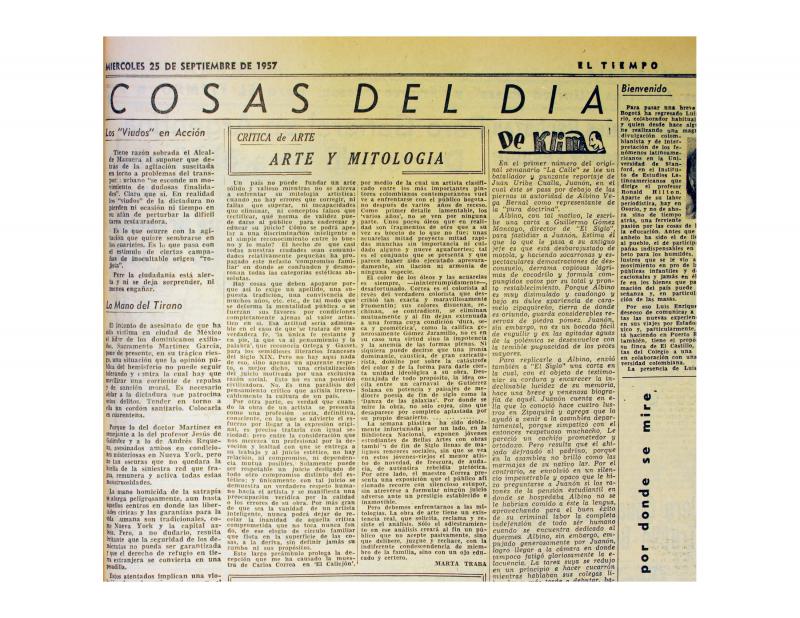In this article, Marta Traba (1923–1983), art critic and historian, would seem to be justifying her work as an art critic and the way she would perform that work during the 1950s. Traba’s starting point was a formalist perspective with which she confronted the opinions that had arisen from the nationalist discourse in Latin America. Similarly, although she had yet to develop a broad theory of Latin American artistic identity, the theory of “the islands” conveys her concern about criticism’s commitment. She was also interested in generating ongoing dialogue that would challenge the values established by the Mexican muralist movement, which served as a standard for the majority of Latin American countries.After the Argentine critic, Traba, arrived and settled in Bogotá in September 1954, she wrote a series of articles that were published in the daily newspaper, Intermedio (1956–57). Beyond tackling criticism based on the specific problems faced by an artist, a work, or an exhibition, she established the theoretical concepts on which she would base her thinking throughout the second half of the 1950s. In her various texts written during that period, Traba set forth a discourse determined by her interest in promoting the autonomy of the field of the visual arts. In the course of her writings, Traba claimed that there was a need to establish a path for the creation and criticism of art that would be separate from other disciplines and discourses. She also suggested that artists and critics consider—as both medium and the essential purpose of artworks—the visual elements and the aesthetic judgments that determine them. Intermedio [Intermission], the daily newspaper of the Colombian capital where she published the article, was the name given to El Tiempo [The Times] between August 1955 and May 1957. The reason for the name change was a censure order imposed on El Tiempo by the Colombian president, General Gustavo Rojas Pinilla (1900–75). Besides this article, Traba also published the following in Intermedio:“Arte y realidad” [Art and Reality] (doc. No. 864609); “El genio anti-servil” [Genius against Servility] (doc. No. 1052760); “Arte y mitología” [Art and Mythology] (doc. No. 1052787); and “Naturaleza: vocabulario de la realidad artística” [Nature: The Vocabulary of Artistic Reality] (doc. No. 858558).




